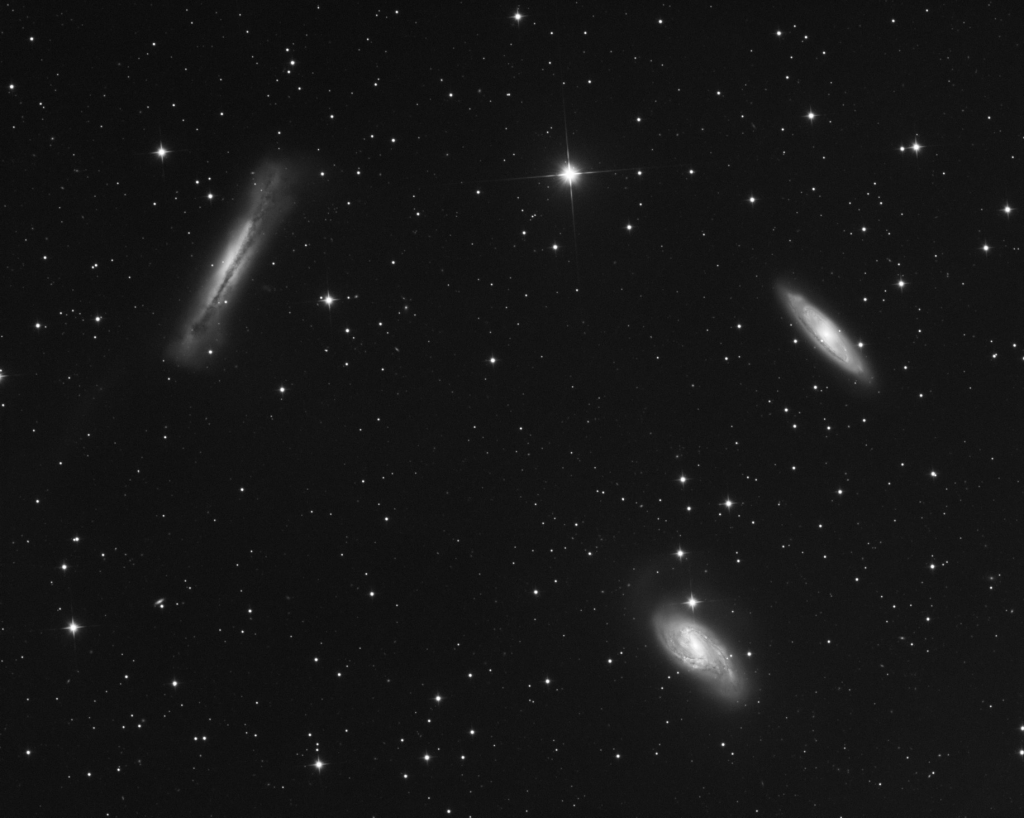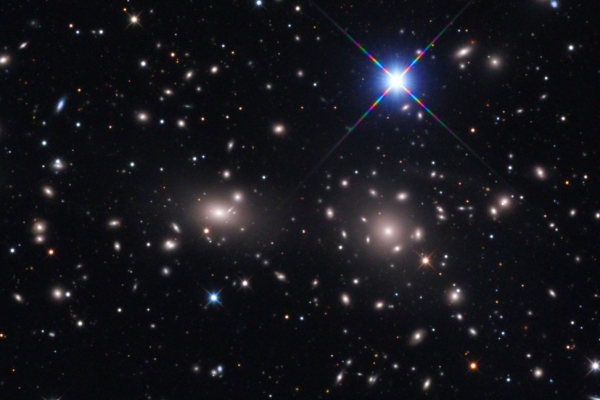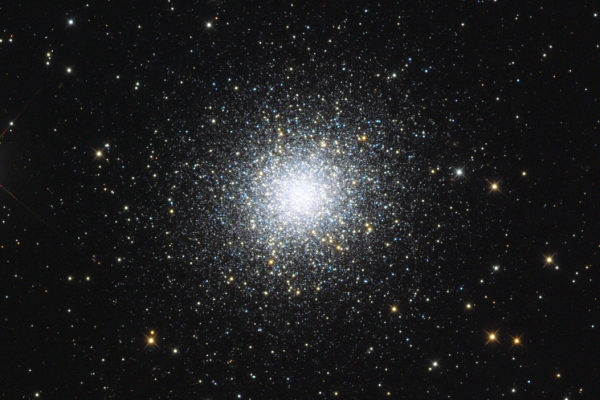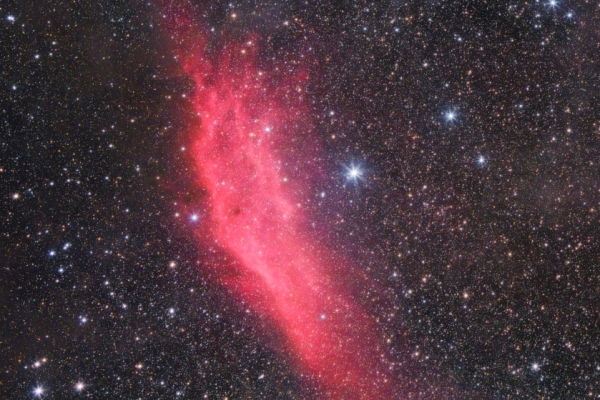The Leo triplet
M65, M66, NGC3628

Technical data
| Instrument: | 173/700 Newton-asztrográf (ZsIO), SkyWatcher comacorrector F/4 |
| Camera: | Atik One 6.0 |
| Filter: | Baader UV/IR block |
| Mount: | SkyWatcher NEQ6 Pro Synscan (modified) |
| Guiding: | Lacerta M-Gen autoguider, OAG |
Image data
| Exposure time: | L: 6 x 10 min |
| Location, date: | Magyarország, Izsákfa 2016. january 16. |
| Transparency: | 8/10 |
| Temperature: | 13 °C |
| FWHM: | 3.20" |
| Processing: | CCDstack |
Photo in progress:
20%
20%
Description
The Leo Triplet is a small group of galaxies about 35 million light-years away in the constellation Leo. This galaxy group consists of the spiral galaxies M65, M66, and NGC 3628.
Technical data
| Instrument: | 173/700 Newton-asztrográf (ZsIO), SkyWatcher comacorrector F/4 |
| Camera: | Atik One 6.0 |
| Filter: | Baader UV/IR block |
| Mount: | SkyWatcher NEQ6 Pro Synscan (modified) |
| Guiding: | Lacerta M-Gen autoguider, OAG |
Image data
| Exposure time: | L: 6 x 10 min |
| Location, date: | Magyarország, Izsákfa 2016. january 16. |
| Transparency: | 8/10 |
| Temperature: | 13 °C |
| FWHM: | 3.20" |
| Processing: | CCDstack |
© Patrik Tarczi 2016
Recommended photos

Coma Cluster of Galaxies
Coma Cluster is a dense cluster of galaxies in constellation Coma Berenices. It contains over 1,000 identified galaxies. Along with the Leo Cluster, they make up the Coma Supercluster.

The Great Globular Cluster
The Great Globular Cluster is brighty shinning deep sky object in constellation Hercules.

The complex of California Nebula
A wide-field photograph of the California Nebula and its surroundings. The connection of the cosmic dust and the bright nebula can be seen.


